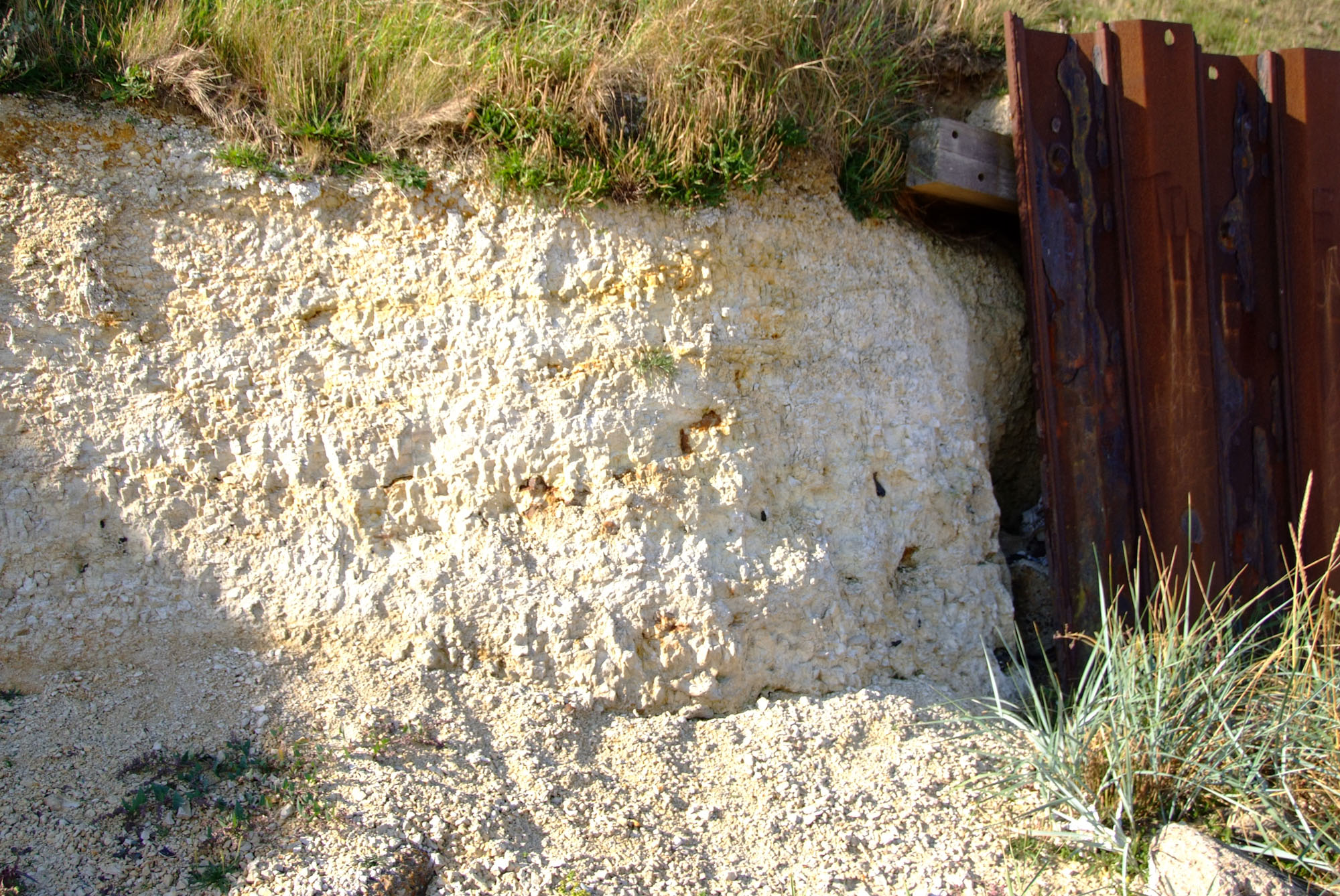Trimingham has the youngest chalk on the UK mainland, from which a few shells can be found in a small cliff face. The chalk has actually been tilted and folded by glaciation, and is a geologically important site. There is easy access onto the beach, although the road turning is easily missed.
DIRECTIONS
♦ Trimingham can be easily missed as it is accessed down a track. Drive towards Trimingham, while heading towards Cromer, and you will discover a large hill with a military base. A giant golf ball-shaped dome will appear.
♦ Before you reach the golf ball and half way up this hill, there is a small turning right (Vale Lane). Follow this and then take a sharp left at the junction with a tarmacked road. This will eventually take you down to the beach with a large amount of parking space at the bottom. The car park area actually sits on top of the chalk erratic.
♦ Ref: TG 29976 37794
PROFILE INFO
FIND FREQUENCY: ♦♦♦ – While fossils are fairly common at this location, they tend to be mostly small oysters. Sometimes, the chalk can become rather dirty, as the sea defence prevents the beds being kept fresh. However, a good period of heavy rain keeps the faces clean.
CHILDREN: ♦♦♦♦ – This location is suitable for children. The wooden sea baffles provide ideal protection for young children and ensures you cannot be cut off. A sandy beach is ideal for families. Just remember to keep away from the cliff edge.
ACCESS: ♦♦♦♦ – This site is important site, as it is the youngest chalk in the UK. This needs to be protected for future generations. No hammering the bedrock.
TYPE: – Most fossils are found in the foreshore gravel exposures, foreshore clays and in the areas of rock and shingle. Trimingham has cliffs, but you are more likely to find fossils on the foreshore.
FOSSIL HUNTING
The most common finds at Trimingham are small oysters, the occasional belemnite and brachiopods. What makes this site so interesting is this chalk would normally be deep below the surface and inaccessible. However glacial processes have tilted and folded the chalk. This has resulted in a small section of cliff and foreshore exposures if you are lucky.
The chalk cliffs are now protected from a sea defence as part of the general sea defence along this part of the coastline. Because of this, they can sometimes appear rather dirty, although heavy rain soon cleans the faces again.
Using a small knife, you can easily pick the fossils out of the chalk. The chalk, being the youngest, is extremely soft and is also ideal for searching for microfossils, since it breaks down exceptionally well in water.
GEOLOGY
The geology at Trimingham is famous for both cliff and foreshore exposures of glacio-tectonic masses of Chalk. The Cretaceous Chalk masses within the Trimingham Cliffs are spectacularly rafted exotic blocks enclosed in Quaternary glacial tills and outwash deposits. The cliff face at Trimingham has the youngest Chalk in the United Kingdom and it is possible to collect shells, bivalves, crinoids, oysters and belemnites from here.
Most of the glacio-tectonic masses expose Lower Maastrichtian Chalk, being the so-called ‘Trim(m)ingham Chalk’ of the early workers, the chalk, which has been tilted and folded by glaciation, is more famously found in Denmark. It would normally be several metres below the surface and inaccessible, but having been disturbed by glacial processes, it forms a small cliff and foreshore exposures (although these are rarely seen).


SAFETY
Common sense when collecting at all locations should be used and knowledge of tide times is essential. The main issue to consider is falling rocks. The small cliff section is badly weathered and is very brittle, so hard hats are recommended.
EQUIPMENT
The chalk is very soft and usually the best tool to take is a knife. A pick and eye protection can also come in very handy when clearing the facing, which can be badly weathered and very brittle. The fossils are fairly fragile but are usually quite small, so a small container is best for getting them home.
ACCESS RIGHTS
This site is a site of special scientific interest (SSSI). This means you can visit the site, but hammering the bedrock is not permitted. For full information about the reasons for the status of the site and restrictions, download the PDF from Natural England.
It is important to follow our ‘Code of Conduct’ when collecting fossils or visiting any site. Please also read our ‘Terms and Conditions‘
LINKS
♦ Buy Fossils, Crystals, Tools
♦ Location Discussions
♦ Deposits Magazine
♦ Join Fossil Hunts
♦ UK Fossils Network
















